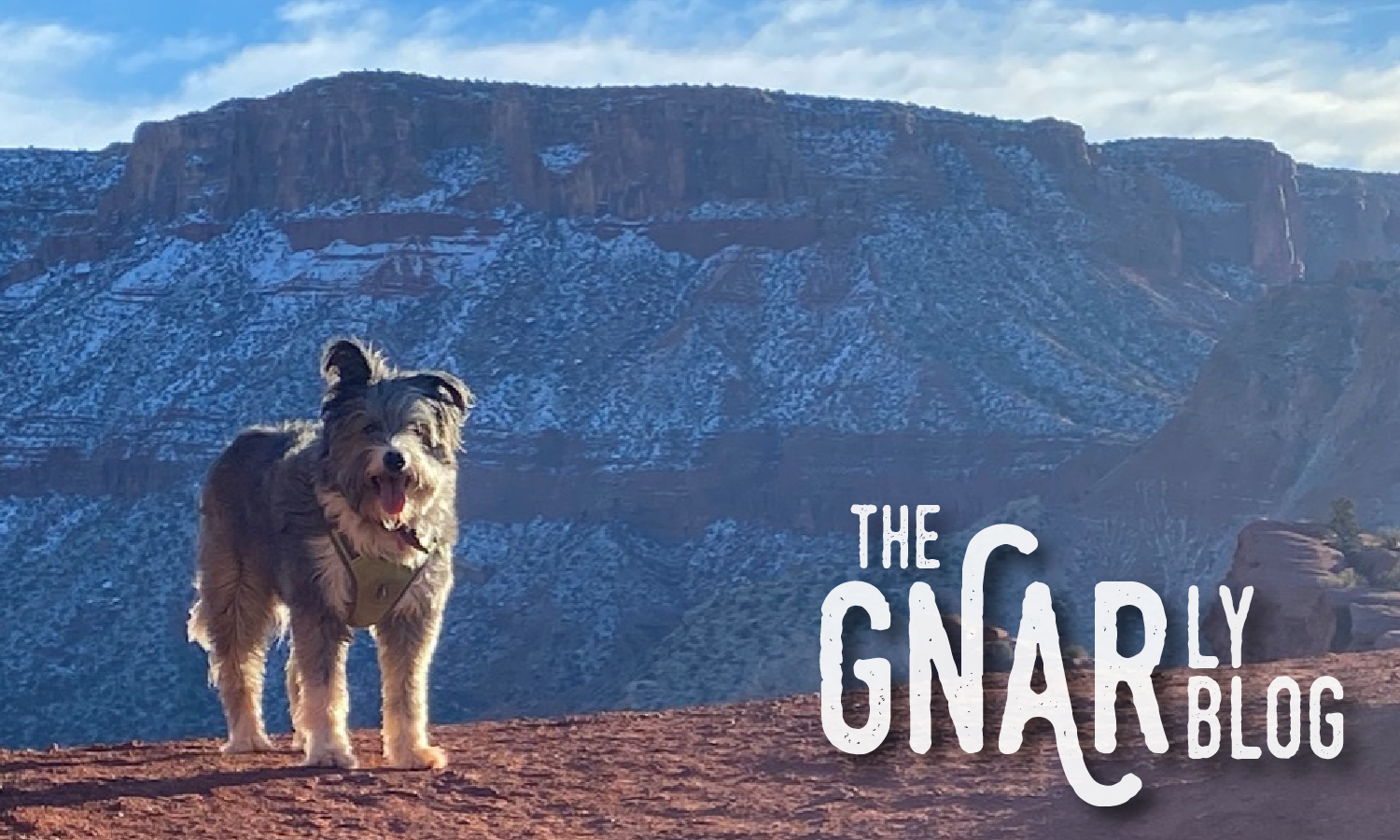
(Photo: Scraps the Dog, looking adorable and epic in Moab, UT)
Seasonality and “Right-sizing” Infrastructure in Gateway Communities
By: Philip Stoker, PhD, Associate Professor in the College of Architecture, Planning and Landscape Architecture, University of Arizona
GNAR Researcher Dr. Philip Stoker and his cute little dog, Scraps, are travelling across the Western U.S. this spring and summer for his sabbatical research into gateway communities. This new blog series – "Philip and Scraps' GNARly Adventures!" – will highlight their travels through photos and observations from gateway communities. Each post asks readers to provide insights into the challenges and their experiences in gateway communities. Please have a read and feel free to write to Philip at philipstoker@arizona.edu with any of your answers and ideas!
JANUARY 2024:
“On paper, we really are a small town with 8,000 residents but we have to have the services and infrastructure in place to functionally operate with up to 80,000 people in town” - Park City Public Official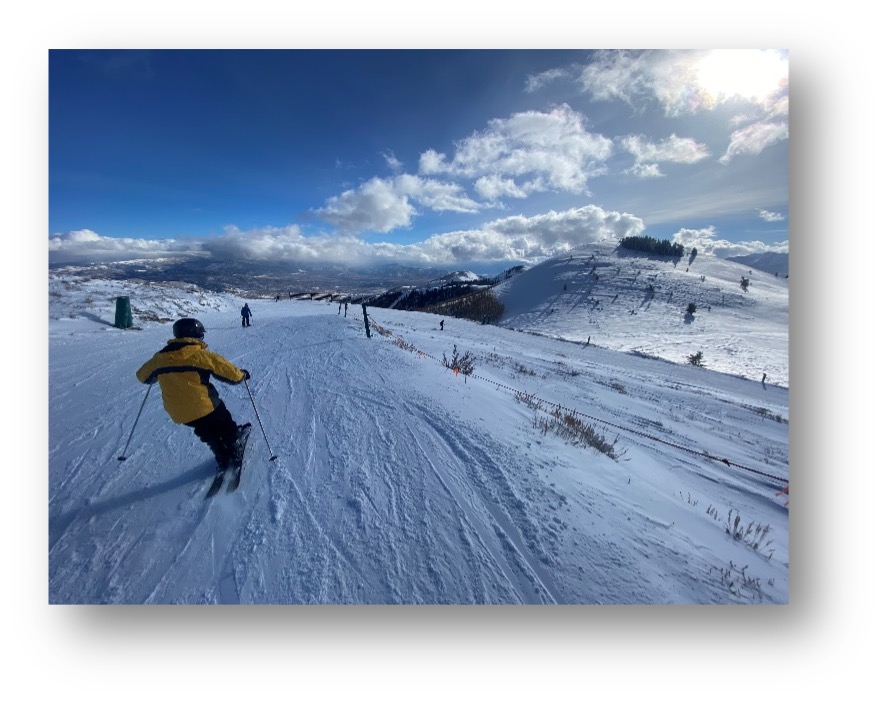
Scraps and I spent the first few weeks of the year visiting family and friends between Moab and Salt Lake City. Along the way we visited and travelled through gateway communities in Utah like Park City, Moab, Castle Valley, Bluff, Blanding and Monticello.
The ski communities were at their peak: long lines of traffic on rural roads, car accidents on the highway, weather alerts and daily commutes of thousands of powder hungry skiers. Checking on the “UTSnow” subreddit, users were complaining about three hours in traffic, anger at other drivers and general despair over how the problem will ever get better. I was a contributor to the crowds this year, being a IKON pass owner, but as the guy on sabbatical I was up there on Tuesdays and Wednesdays so I missed the weekend crush. My friend had received an e-mail that the Utah ski resorts were sending mass e-mails to let everyone across their mailing lists know that they are currently one of nation’s leaders for snowpack…now is the time to come on out for a visit!
Park City was in full swing. Year round there are about 8,000 residents but during peak season the “service population”, i.e. the actual number of people in the community, can balloon up to 80,000 people in the city during major events like Sundance. Estimates are that on average there are an additional 35,000 people each day that the city must provide services and infrastructure to support.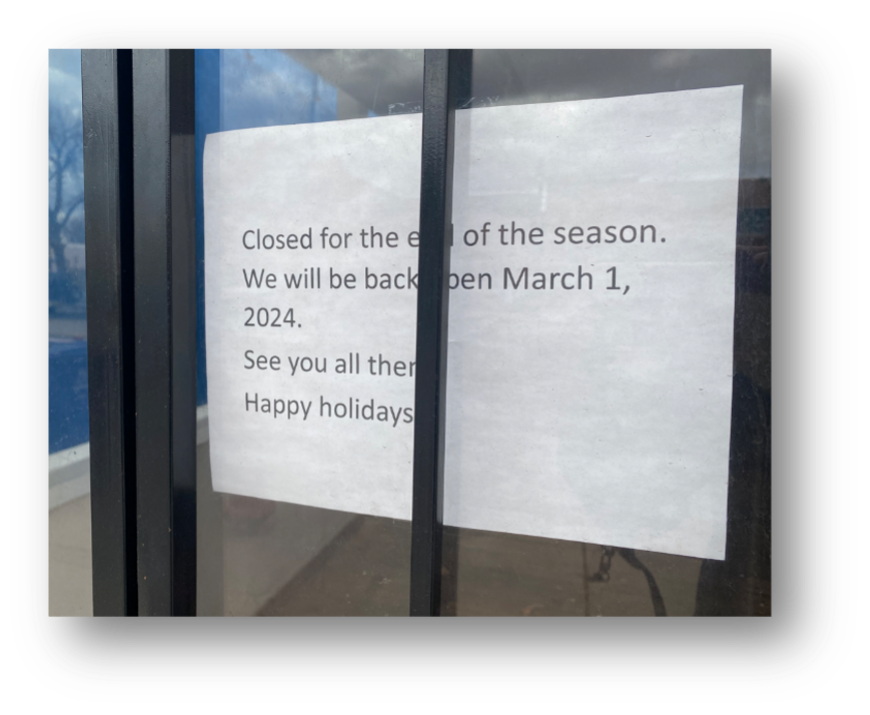
Moab on the other hand was quiet. My aunt was trying to sell her house and couldn’t find people to come in through the door. Some shops were closed, hours were limited, and I didn’t see anyone floating down the Colorado River (it had some ice flows though). I saw a few rock climbers hugging close to the sunny side of the canyon along the Colorado River but the ice and snow traces along the ground probably made for tougher conditions than most people enjoy. There were a few jeeps slowly crawling along the Sand Flats routes, a handful of hikers, and when I visited Arches National Park the entrance line was under five minutes! That said, trailheads were busy with families and tourists walking around in puffy jackets. I had a hard time parking at the trailhead for a sunset hike to Delicate Arch, but it was just a five-minute delay and not a turn around and go home situation.
Moab has so many natural amenities that draw in visitors from around the world: national parks, hiking, jeeping, rock climbing, river rafting, mountain biking, and even some more niche hobbies like drone flying, geocaching, rope swinging and golf. If Moab were to build a ski resort on the slopes of the La Sals, they may find another group of recreational visitors to come down during the off-season. But would they want to?
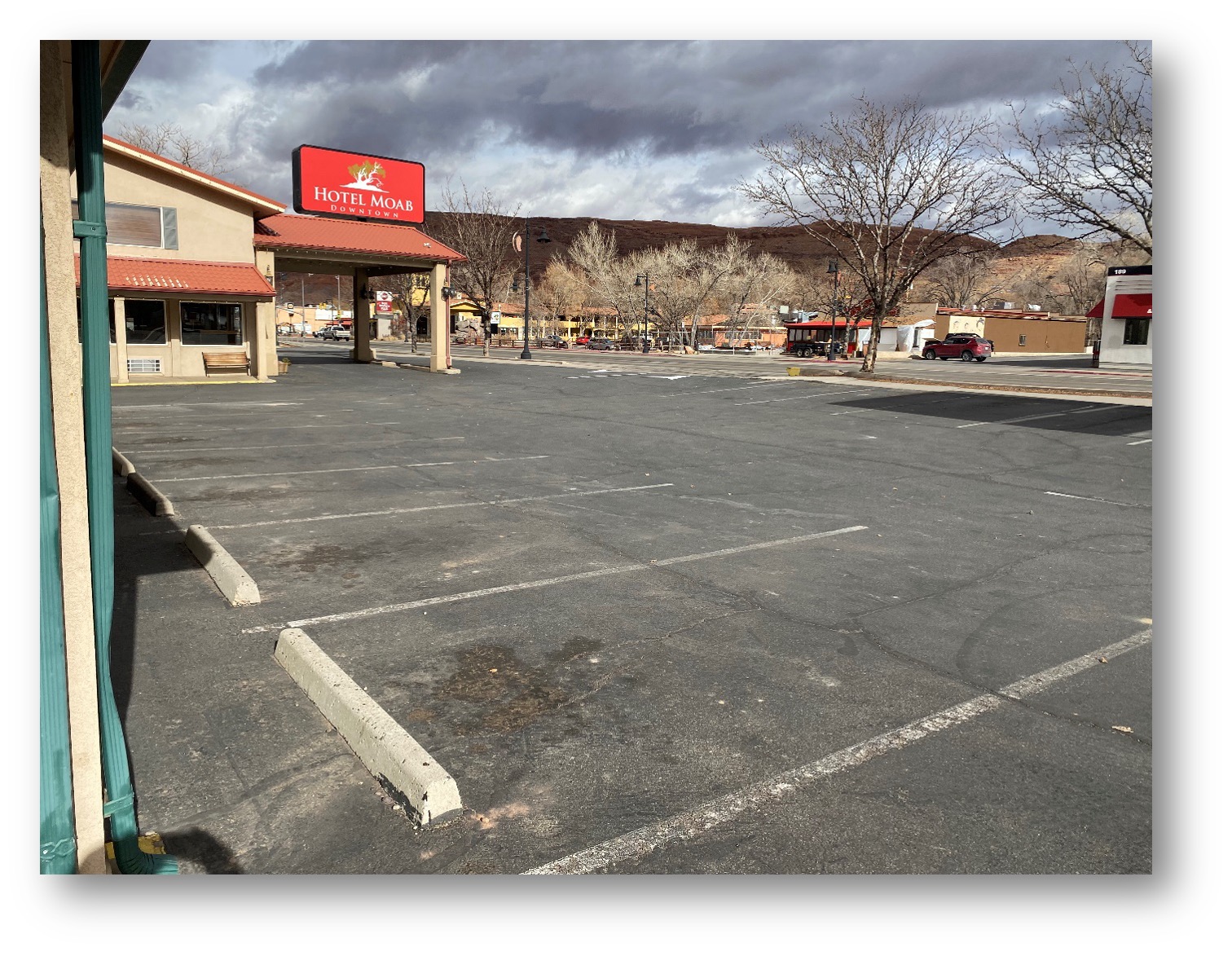
Costs and Benefits of the off-season
Many people in Moab like the break: its quiet, things aren’t as crowded, access to amenities is easier and there is less competition to do and enjoy the things that attract people to gateway communities. A public official in Moab commented that “a winter break from tourism was a big part of the local culture for a long time. Residents really appreciate(d) the break from noise and traffic. The winter was quiet”. Off-season may also be the only time to give overworked employees some much needed time off. From my own perspective, Scraps and I had a great time hiking for hours without seeing more than one or two other people on the trail.
My aunt told me that “It’s peaceful, but there’s nothing going on… [there are] empty neighborhoods entirely comprised of rentals and second homes. That’s kind of lonely when you are living in a cold dark place by yourself…there’s no community, there’s nightly rentals”.
My aunt moved to Moab 20 years ago, but had been visiting her whole life. She told me, “There were 15 friend groups in the neighborhood, but they all sold and investors picked up the houses to sell as rentals… I want more of a town, if I need something I want to go get it. I’m tired of ordering through Amazon.”
The off-season is shrinking in Moab. A public official reported that “the Travel Council is working hard to extend the tourist season” and “Main St. is busier, and it stays busy longer through the year. We are moving to a year-round economy quickly. I mean, gridlock on Main St... it's more regular now.” Changes to Arches and Canyonlands NP reservation and permitting system also extend the tourist season as not everyone can go during the busy season, so now some visitors are “forced” to choose dates that aren’t as popular or as common. Policies like these may manage peak visitation, but as a result the duration of the off-season can shrink.
Right-sizing infrastructure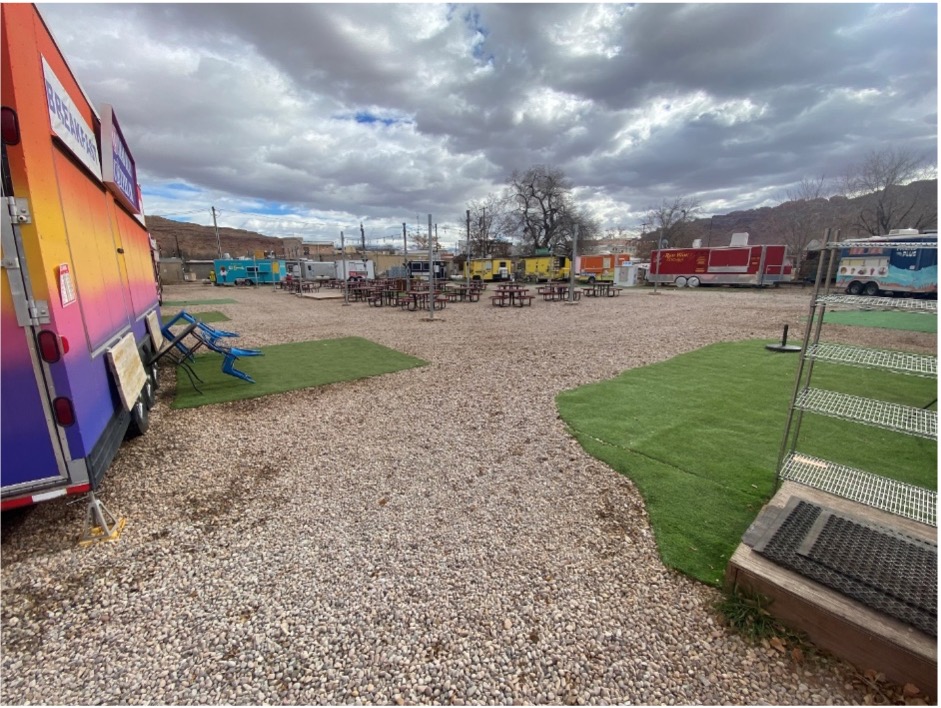
Communities like Moab aren’t complete ghost towns in the off-season, but the absence of the tourists is made obvious by all the empty spaces and infrastructure required to support them. So then the question is: How do you “right-size” a gateway community’s infrastructure? If you build for peak visitation (i.e. the “service population”), there will be portions of the year where there are empty parking lots, closed stores, and excessively costly infrastructure. However, if you don’t build the infrastructure for the service population, you get problems with crowding, traffic, and wastewater treatment plants reaching their maximum capacity. Which of these two options is acceptable to the most residents, public officials, and visitors? I would guess it is to build and plan for peak capacity, but actively manage and monitor that peak.
While in Moab, I could see signs of a community that has developed infrastructure to serve the peak service population. From what I could see, there were many empty motel/hotel parking lots and almost no one was walking on Main Street on a three-day holiday weekend. Another example is in the picture above where you can see an empty food cart plaza.
On the day of the photo, the plaza was completely empty until one family brought their own food and used the tables. I had lunch here last summer and it was packed. Seeing the family enjoy their own “personal park” does highlight that the this space downtown can be a usable public space for year-round residents in the off-season.
There are probably many more opportunities for infrastructure and public spaces that both serve the service population and benefit year-round residents. As a researcher, I am very interested to hear about any examples of gateway communities building this redundancy into their infrastructure planning, especially if they are intentionally trying to manage the extreme seasonality of tourist visitation.
Looking for solutions
All right everyone in the GNAR community, I would love to hear from you! This episode's question is:
How has your gateway community already "right-sized" their infrastructure, or in what ways does it still need to?
Specifically, I want to know:
- How does your community plan for seasonality when considering providing infrastructure?
- What infrastructure has your community successfully implemented, and what is lacking?
- What do the residents in your community need that isn’t being provided?
- What growth policies are useful for pacing infrastructure development?
- Do you know any good examples of dual-purpose places in communities?
Feel free to write to me at philipstoker@arizona.edu. If you don’t write to me, that’s ok… I just might be visiting your gateway community next and I’ll be asking then. Look out for me and this little dog!
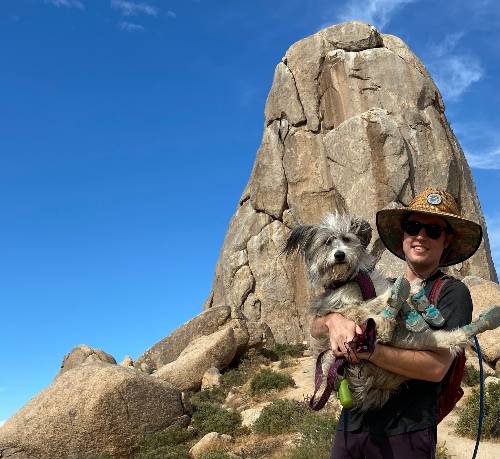
Philip Stoker, PhD, is an assistant professor of planning and landscape architecture in the College of Architecture, Planning and Landscape Architecture. Philip holds a Ph.D. in Metropolitan Planning, Policy, and Design from the University of Utah where he completed his thesis on urban water use and sustainability. His academic foundations are in ecology, planning, and natural resource management. He has conducted environmental and social science research internationally, including work with the World Health Organization, Parks Canada, the National Park Service and the Vancouver 2010 Olympic Games.
Philip has expertise in urban water demand and the integration of land use planning with water management. His research on urban water demand has focused on how land cover, built environmental characteristics, social conditions, and demographics all interact to influence water use in Western U.S. cities.


